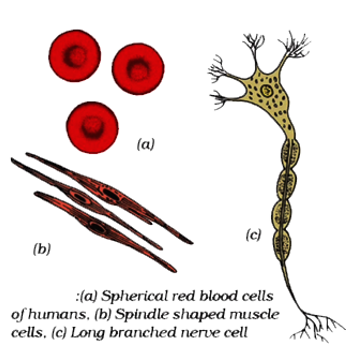
Short Notes and Formulas of class 8 science chapter-Cell
May 13, 2022, 16:45 IST
Class-8 science chapter-Cell
The cell is the smallest unit of life in our body. The word cell comes from the Latin term cellular which means a small room. The cell is the structural and functional unit of all living organisms, arid is sometimes called the “building block of life.” The term cell was coined by ‘Robert Hooke’. The English Scientist Robert Hooke (1635-1703) is credited with the discovery of the cell in the year 1665. He took thin slices of cork and observed them under a microscope. Cork is a part of the bark of a tree. He noticed small compartments in the cork slice. These compartments appeared like a ‘honeycomb’. Hence he coined the term cell for each compartment (in Greek, cell means a compartment).The cell theory was first proposed in 1839 by Matthias Schleiden and Theodor Schwann and later modified by Rudolf Virchow in 1855.
Cell Theory consists of three principles
- All living things are made up of cells.
- Cell is the structural and functional unit of life.
- All cells arise from ‘preexisting cells’.
Organisms showing variety in shape, size and number:
- There are millions of living organisms of varying shapes and sizes. Similarly, in an organism itself there are cells present of varying shape and size, depending upon the function performed by them.
- The single celled organisms are called unicellular organisms. A single celled organism is able to perform all the necessary functions that multicellular organisms perform. For example - Bacteria, Amoeba, Paramecium, yeast etc.
- Organisms made up of more than one cell are called multi-cellular organisms. However, a multi-cellular organism, which may be made up of billion of cells, beings its life as a single cell in the form of fertilized egg.
Cell Size:
The size of cells varies in different organisms, even in the same organism the cell size may vary in different tissues. For example, in human body blood platelets are 2 - 3 μm, red blood cells are 7.5 μm and a nerve cells may be as long as 3 feet. However, most of the cells in the human body are between 20 to 30 μm in diameter.
- Prokaryotes are smaller in size than eukaryotic cell.
- The smallest cells are of Pleuro-pneumonia like organism (PPLO)or Mycoplasma (0.1μm), while largest animal cell is of ostrich egg (170 × 135 mm.)
- Nerve cell is the longest sized cell of human body.
Shape of cells
Shape of cells varies not only in different organisms but also in different parts of the same organism. For example in man-Cheek cells - flat and polygonal
- Intestinal cells - Elongated column like
- Smooth muscles - spindle shaped
- Neurons-long thread like
- White blood cells - Irregular in shape
- Red blood cells - Round
- Shape of the cell mainly depends upon the function it performs

Do solve NCERT questions with the help of NCERT solutions for class 8 Science.
Find Pdf of chapter-Cell having Important short notes of chapter






